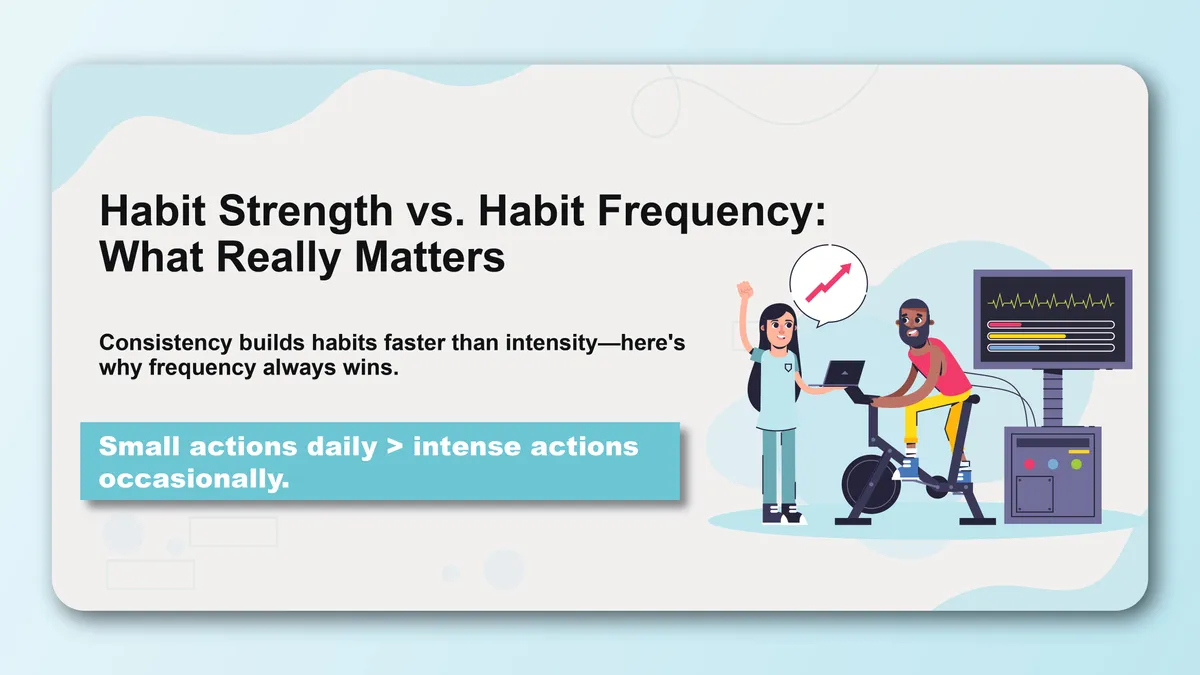The human brain's ability to form habits represents one of evolution's most sophisticated adaptations, allowing us to automate complex behaviors and conserve cognitive energy for novel challenges. Recent advances in neuroscience have revolutionized our understanding of how habits form, persist, and can be modified at the neural level. Using cutting-edge neuroimaging techniques, researchers have mapped the intricate brain networks involved in habit formation, revealing mechanisms that were previously invisible to scientific inquiry.
Modern neuroscience has identified habit formation as a dynamic process involving multiple brain regions working in concert. The basal ganglia, particularly the striatum, serves as the central hub for habit processing, while the prefrontal cortex provides executive control and the limbic system contributes emotional and motivational components. This understanding has profound implications for how we approach behavior change, addiction treatment, and personal development.
Perhaps most exciting is the discovery that the brain remains remarkably plastic throughout life, constantly rewiring itself based on experience and behavior. This neuroplasticity means that established habits can be modified and new ones can be formed at any age, challenging long-held beliefs about the fixity of behavioral patterns. The latest research reveals specific mechanisms through which repeated behaviors literally reshape brain structure and function.
Recent studies have also illuminated the role of neurotransmitters in habit formation, particularly dopamine, which was previously thought to signal pleasure but is now understood to encode prediction error and learning signals. This revised understanding has led to new approaches for habit change that work with, rather than against, the brain's natural learning mechanisms.
The integration of neuroscience findings with practical habit change strategies represents a new frontier in behavior modification. By understanding the biological basis of habits, we can design more effective interventions that leverage the brain's natural learning processes rather than fighting against them.
The Brain's Habit Architecture
Basal Ganglia: The Habit Center
Striatal Function in Habit Formation The striatum, composed of the caudate nucleus and putamen, serves as the primary processing center for habit formation and execution.
Neural Mechanisms:
- Dorsolateral striatum processes automatic habit execution
- Ventral striatum involved in goal-directed behavior and motivation
- Transition from ventral to dorsal striatum as habits become automatic
- Striatal neurons develop specific firing patterns for habit sequences
- Synaptic plasticity changes that encode habit memories
Cortico-Striatal Circuits The communication between cortical areas and the striatum forms the foundation of habit learning.
Circuit Organization:
- Prefrontal cortex to ventral striatum: goal-directed learning
- Sensorimotor cortex to dorsal striatum: automatic habit execution
- Parallel processing loops for different types of learning
- Competition between goal-directed and habitual systems
- Circuit maturation determines habit strength and automaticity
Neurotransmitter Systems
Dopamine: The Learning Signal Recent research has redefined dopamine's role from pleasure signaling to prediction error coding and learning facilitation.
Dopamine Functions:
- Prediction error signals that drive learning
- Motivation and wanting rather than liking
- Cue-response learning and habit formation
- Plasticity induction in habit-related circuits
- Individual differences in dopamine sensitivity affect habit formation speed
Acetylcholine and Attention Acetylcholine plays a crucial role in attention and the flexibility needed for habit change.
Cholinergic Mechanisms:
- Attention to environmental cues and context
- Facilitation of new learning and plasticity
- Balance between exploitation (habits) and exploration (new behaviors)
- Modulation of cortico-striatal plasticity
- Role in breaking established habit patterns
GABA and Inhibitory Control GABA-mediated inhibition is essential for habit regulation and control.
Inhibitory Functions:
- Suppression of unwanted habit execution
- Executive control over automatic behaviors
- Balance between different habit systems
- Regulation of impulsive responses
- Individual differences in inhibitory capacity
Neural Plasticity and Habit Change
Structural Brain Changes
Synaptic Plasticity Habit formation involves specific changes in synaptic strength and connectivity.
Plasticity Mechanisms:
- Long-term potentiation (LTP) in habit-relevant circuits
- Synaptic pruning to strengthen important connections
- Formation of new dendritic spines
- Changes in neurotransmitter receptor density
- Myelination changes that speed neural transmission
Neurogenesis and Habit Formation Adult neurogenesis, particularly in the hippocampus, contributes to learning and habit modification.
Neurogenesis Effects:
- New neurons integrate into existing habit circuits
- Enhanced learning capacity and behavioral flexibility
- Factors that promote neurogenesis (exercise, learning, environment)
- Role in breaking old habits and forming new ones
- Individual differences in neurogenesis rates
Functional Network Changes
Default Mode Network The default mode network's activity patterns change as habits become more automatic.
Network Adaptations:
- Decreased default mode activity during habit execution
- Changes in network connectivity patterns
- Self-referential processing alterations
- Mind-wandering patterns during habitual behaviors
- Individual differences in network efficiency
Executive Control Networks Changes in executive control networks determine habit regulation capacity.
Control Network Functions:
- Monitoring and regulation of habit execution
- Conflict detection between habits and goals
- Cognitive flexibility for habit change
- Working memory involvement in new habit formation
- Age-related changes in executive control
Latest Research Findings
Timing and Consolidation
Sleep and Habit Consolidation Recent studies have revealed sleep's critical role in habit memory consolidation.
Sleep Research:
- REM sleep consolidates procedural habit memories
- Slow-wave sleep strengthens habit neural pathways
- Sleep deprivation impairs habit formation and change
- Optimal sleep timing for habit consolidation
- Individual sleep needs and habit learning efficiency
Critical Periods in Habit Formation New research identifies specific time windows when habits are most malleable.
Critical Period Research:
- Initial 66-day average for habit automation (recent meta-analysis)
- Early consolidation period (first 21 days) crucial for establishment
- Reconsolidation windows when established habits become changeable
- Stress and habit formation timing interactions
- Age-related changes in habit formation speed
Individual Differences
Genetic Factors Genetic research has identified specific genes that influence habit formation capacity.
Genetic Influences:
- DRD2 gene variants affect dopamine sensitivity and habit formation
- COMT gene influences prefrontal dopamine and executive control
- 5-HTTLPR variants affect serotonin and emotional habit regulation
- BDNF gene impacts neuroplasticity and learning capacity
- Epigenetic factors that modify gene expression
Personality and Neural Differences Brain imaging studies reveal how personality traits relate to habit formation patterns.
Personality-Brain Connections:
- Conscientiousness correlates with stronger prefrontal-striatal connectivity
- Impulsivity linked to altered dopamine signaling
- Anxiety affects habit flexibility and change capacity
- Openness to experience influences learning system engagement
- Individual differences in habit system dominance
Environmental and Social Factors
Social Brain Networks Recent research illuminates how social factors influence habit formation through specific brain networks.
Social Neuroscience:
- Mirror neuron systems and habit imitation
- Social reward processing and group habit formation
- Oxytocin and trust in habit-related social learning
- Cultural neuroscience of habit differences
- Social media and digital habit formation patterns
Environmental Neuroplasticity Environmental factors create specific changes in habit-related brain circuits.
Environmental Effects:
- Physical environment design impacts habit neural pathways
- Stress hormones alter habit formation and change capacity
- Nutrition affects neurotransmitter systems and habit formation
- Exercise promotes neuroplasticity and habit change capacity
- Technology use patterns reshape attention and habit systems
Clinical and Therapeutic Applications
Addiction and Compulsive Behaviors
Neural Basis of Addiction Understanding addiction as a disorder of habit learning has transformed treatment approaches.
Addiction Neuroscience:
- Hijacking of normal habit formation mechanisms
- Altered dopamine signaling in addiction
- Prefrontal cortex dysfunction in impulse control
- Stress system dysregulation and relapse triggers
- Neuroplasticity-based recovery approaches
Obsessive-Compulsive Disorder OCD research provides insights into when habit systems become dysfunctional.
OCD Research:
- Hyperactive cortico-striatal circuits in OCD
- Difficulty in habit flexibility and switching
- Serotonin system abnormalities affecting habit control
- Deep brain stimulation effects on habit circuits
- Cognitive-behavioral therapy's neural mechanisms
Therapeutic Interventions
Neurofeedback and Brain Training Real-time neurofeedback allows direct training of habit-related brain activity.
Neurofeedback Applications:
- Training prefrontal control over automatic behaviors
- Enhancing neuroplasticity for habit change
- Biofeedback for stress reduction and habit formation
- Cognitive training programs targeting habit flexibility
- Virtual reality for habit context modification
Pharmacological Interventions Understanding neurotransmitter systems has led to targeted medications for habit change.
Pharmacological Research:
- Dopamine modulators for habit formation enhancement
- Acetylcholine enhancers for increased behavioral flexibility
- GABA modulators for improved inhibitory control
- Nootropics and cognitive enhancement for habit change
- Timing of medication relative to learning and practice
Future Directions in Habit Neuroscience
Emerging Technologies
Advanced Brain Imaging New imaging techniques provide unprecedented views of habit formation in real-time.
Imaging Innovations:
- High-resolution fMRI for detailed circuit mapping
- Multi-modal imaging combining structure and function
- Real-time imaging during habit formation and execution
- Portable EEG for habit monitoring in natural environments
- Optogenetics for causal testing of habit circuits in animal models
Computational Modeling Sophisticated models help predict and understand habit formation patterns.
Modeling Approaches:
- Machine learning models of individual habit formation
- Network analysis of brain connectivity changes
- Predictive models for habit change success
- Computational theories of habit-goal interaction
- AI-assisted personalized habit interventions
Personalized Approaches
Precision Habit Medicine Future approaches will tailor habit interventions to individual neural profiles.
Personalization Strategies:
- Genetic testing for optimal habit formation approaches
- Brain imaging for personalized intervention design
- Biomarker identification for habit change readiness
- Personalized timing of habit interventions
- Individual difference algorithms for habit app design
Predictive Analytics Advanced analytics will predict habit formation success and optimize interventions.
Predictive Approaches:
- Machine learning models for habit success prediction
- Real-time adjustment of habit interventions
- Population-level habit formation pattern analysis
- Predictive models for habit relapse prevention
- Integration of multiple data sources for prediction accuracy
Practical Applications of Neuroscience Research
Evidence-Based Habit Design
Optimal Learning Conditions Neuroscience research informs the design of optimal conditions for habit formation.
Learning Optimization:
- Timing of practice for maximum neural plasticity
- Environmental design for habit cue salience
- Stress management for optimal learning states
- Sleep optimization for habit consolidation
- Attention training for improved habit formation
Neural-Informed Interventions Practical interventions based on understanding of brain mechanisms.
Intervention Design:
- Working with natural brain learning systems
- Leveraging prediction error for habit formation
- Using social brain networks for group habit formation
- Designing technology that supports natural neural processes
- Creating environments that promote positive neuroplasticity
Technology Integration
Brain-Computer Interfaces Future technology may provide direct interfaces with habit formation systems.
Interface Applications:
- Real-time feedback on neural habit formation
- Direct brain stimulation for habit enhancement
- Neural prosthetics for habit execution
- Brain-controlled habit tracking and modification
- Therapeutic brain stimulation for habit disorders
Digital Therapeutics Evidence-based digital tools designed around neuroscience principles.
Digital Applications:
- Apps that work with natural brain timing
- Virtual reality for habit context training
- AI coaches based on neural learning principles
- Biometric integration for optimal intervention timing
- Social platforms designed around brain-based habit formation
The neuroscience of habit formation represents one of the most rapidly advancing fields in brain research, with profound implications for personal development, therapy, and human enhancement. As our understanding of the brain's habit systems continues to evolve, we gain increasingly sophisticated tools for behavior change that work with, rather than against, our neural architecture.
The latest research reveals that habits are not simply behavioral patterns but represent fundamental changes in brain structure and function. This understanding opens new possibilities for more effective, personalized approaches to habit change that leverage the brain's natural plasticity and learning mechanisms.
Future developments in this field promise to revolutionize how we approach behavior change, mental health treatment, and human performance optimization. By continuing to bridge the gap between laboratory neuroscience and practical applications, we can develop increasingly effective tools for helping people create the lives they want through strategic habit formation.
Ready to apply cutting-edge neuroscience to your habit formation journey? Start building your evidence-based habit practice with Habityzer and discover how understanding your brain can transform your ability to create lasting behavioral change.



